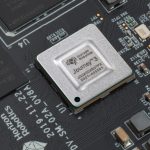
Researchers have built an AI with virtual brain cells that wires itself to navigate an environment much like mammals do in nature.
Fully understanding the ‘internal GPS’ used by humans and other mammals to navigate from point A to B has eluded neuroscientists for decades. By analysing a new AI, which developed ‘grid cells’ similar to our brains, researchers believe we could be closer than ever.
The new AI was designed by a team from Google DeepMind and University College London to navigate a virtual environment from one point to another in the most efficient way possible.
In findings posted to science journal Nature, the AI developed grid cells similar to mammals. Grid cells were first discovered in 2005 by Norwegian neuroscientists May-Britt and Edvard Moser, earning them a share of the 2014 medicine Nobel Prize.
The neuroscientists made their discovery after observing rats navigating and finding grid cells in their brains firing at points which formed a hexagonal pattern.

Animation provided by DeepMind
Grid cells work in combination with other brain cells. This includes ‘place cells’ which activate when a mammal is in a specific location, and ‘head direction cells’ which fire when the head is pointed in a specific direction.
How all of these cells work together is less well known, but the researchers are hoping to find some answers by observing the AI. They expect this will be just the start in using AI to gain a greater understanding of biology.
You can find the formatted Nature paper here, but note that it’s behind a controversial paywall. Alternatively, the unformatted full paper is available free here (PDF).
What are your thoughts on the use of AI to gain a deeper understanding of biology?






“Virtually Brainy: AI wires itself to navigate like mammals”